- Fast delivery
- Free shipping from €75,-
- More than 5000 parts in stock
Menu
When purchasing an engine, many people do not realize that often the electrics of the engine (the ignition) or the electrics of the vehicle (the rest of the moped) need to be modified. Want to know which engine is suitable for your 4-stroke moped? In this blog, we explain what types of ignitions there are, which engine they belong to, and how this works with your moped and its associated electrics.
To make the choice of the right new engine clear, we first explain the different types of ignitions. If a type of ignition does not correspond with the moped's electrics, this can pose a challenge (often in terms of lighting and charging current). For the mindset, it is often better to assume that an ignition belongs more to the moped (electrics) than to the engine. The electrics, such as the voltage regulator and CDI unit, are tuned to the ignition that is factory-installed on the engine.
The biggest difference is between OT and NT ignitions. This is often also referred to as 6v or 12v, or contact points and CDI. We will first explain the difference between the two systems.
On our website, we often write about OT and NT. By OT, we mean “old type”. This type of ignition is found on mopeds from the late ’60s to the early ’80s. An OT can be recognized by the use of contact points that determine the ignition timing (the spark). In the vast majority of cases, a moped with an old-type ignition is equipped with 6-volt electrics. An old-type ignition can be found in, among others:
The Honda C310, C320, PF50, and CB50 are also equipped with a 6-volt electrical system, but they have a completely different type of engine than the models above. Therefore, we do not mean these types when we talk about “old type”. A CDI ignition is, however, available for the CB50, more on that later.
On newer types of Honda (from the early ’80s) and all Chinese reproduction engines, you will find a CDI ignition. A CDI ignition is also called an electronic ignition. The biggest difference is that this type of ignition no longer has contact points; the ignition timing is determined by the CDI unit. In the vast majority of cases, a 4-stroke moped with CDI ignition is equipped with 12-volt electrics. Models that came factory-equipped with CDI ignition and 12-volt electrics are:
If you are sure you have a CDI ignition, you are not there yet. We can distinguish two more types: grounded coils and floating ground coils. And thus also the corresponding system in the moped.
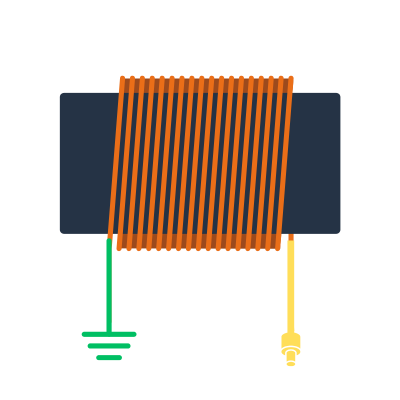
These are usually recognizable by a white and yellow power wire (unfortunately, these colors are not always used by every manufacturer).
To be sure: Use a multimeter to check if the wires coming from the coil (white or yellow) have continuity with the ground wire or the stator plate. If this is the case, you have grounded coils. These coils are used for an AC system.

These are usually recognizable by 2 (or sometimes 3) yellow power wires (unfortunately, these colors are not always used by every manufacturer). To be sure: Use a multimeter to check if the wires coming from the coil (white or yellow) have continuity with the ground wire or the stator plate. If there is no continuity between the wire and the stator plate, you have floating ground coils. In this system, the lighting is usually switched via the ignition lock, and the low beam also stays on when the moped's ignition is on. This system is common in newer replicas such as Hanway and Mash. These coils are mainly used in a DC system.
For more info on connecting the correct voltage regulator for the different coils, see: https://4stroke-parts.com/connecting-a-regulator
Finally, we distinguish two more common systems.
In the AC (Alternating Current) system, the lighting and ignition run on alternating current. This is the most common system for the well-known Honda 4-stroke geared mopeds. The CDI unit receives its power directly from the ignition coil. Usually, only the indicators, neutral light, horn, and brake light are switched via the battery. Mopeds with an AC system can therefore start without a battery. This is the most common CDI unit for mopeds with an AC system: https://4stroke-parts.com/1030150012-CDI-unit-AC-unlimited
Note: In practice, you also have DC systems where the ignition is still powered via the ignition coil. (Example: Hanway Raw 50). Here, everything is switched via the battery (DC) *except* the ignition. In that case, you still need an AC CDI unit.
In the DC (Direct Current) system, everything (lighting/ignition) is switched via the battery, including the ignition. This means you cannot start the moped with a dead battery. When an ignition is truly intended for a DC system, it sometimes does not have a separate power wire for the CDI/ignition (because it gets its power from the battery). A common CDI unit for a DC system is: https://4stroke-parts.com/1110007445-CDI-unit-DC-unlimited
Note: A DC system usually has floating ground coils.
Note: If you have a moped with a DC system and have replaced the engine with one that has a different type of ignition *with* a power wire, you can simply cap off the existing power wire for the CDI (red/black).
Note: In practice, it can be very useful to transfer the ignition from the old engine to the new engine; then you don't have to modify the vehicle's electrics. Make sure you buy an engine where this is possible. Example: if you first have an engine with an overhead starter motor, buy another engine with an overhead starter motor so the chance is highest that you can transfer the ignition.
When you are going to use an NT (New Type) or reproduction (like Zongshen or Lifan) engine on an OT moped, you will have to modify the electrics. An OT moped does not have a connection for a CDI unit or a voltage regulator (to regulate the higher current output). To help you, we have developed an easy, ready-made solution for this: https://4stroke-parts.com/1110000707-CDI-12-volt-connection-set-eg-for-conversion-6-volt-moped (available in various versions).
Connection kit:
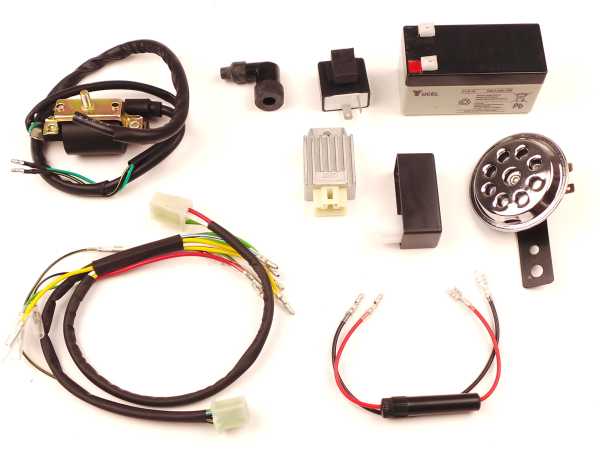
Easy to connect:
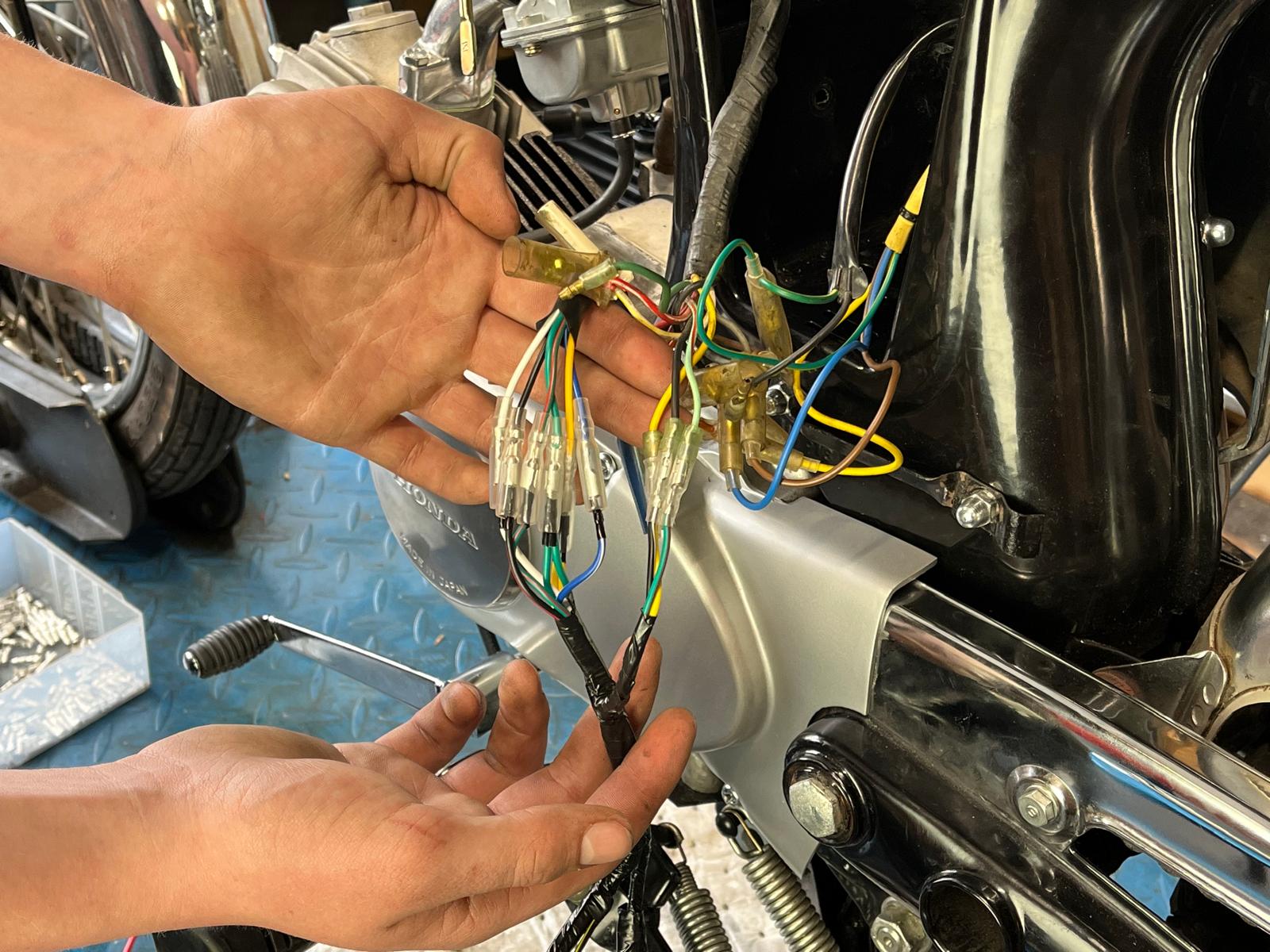
You can also choose to equip an OT engine with a CDI ignition. We have developed a set with ignition for installing a CDI ignition on OT engines. https://4stroke-parts.com/1110014200-CDI-ontsteking-ombouw-set-12-volt-elektra-SS50-CD50 (available in various versions).
In many cases, it is difficult to install an engine with a starter motor on an OT moped. There is simply not enough space for the starter motor and/or the larger battery you need for the starter motor.
Popularly sold engines for OT mopeds are the Lifan, Zongshen and YX ones, without E-start: 4stroke parts.com - Engines
There are no ready-fit reproduction engines available for the Honda CB50 and CY50. However, it is possible to equip a Honda CB50j or CY50 with a CDI ignition. We have put together a nice set for the CB50j and CY50: https://4stroke-parts.com/1110000122-CDI-ignition-conversion-kit-12-volt-electricity-CB50-CY50
CB50 with CDI-ignition
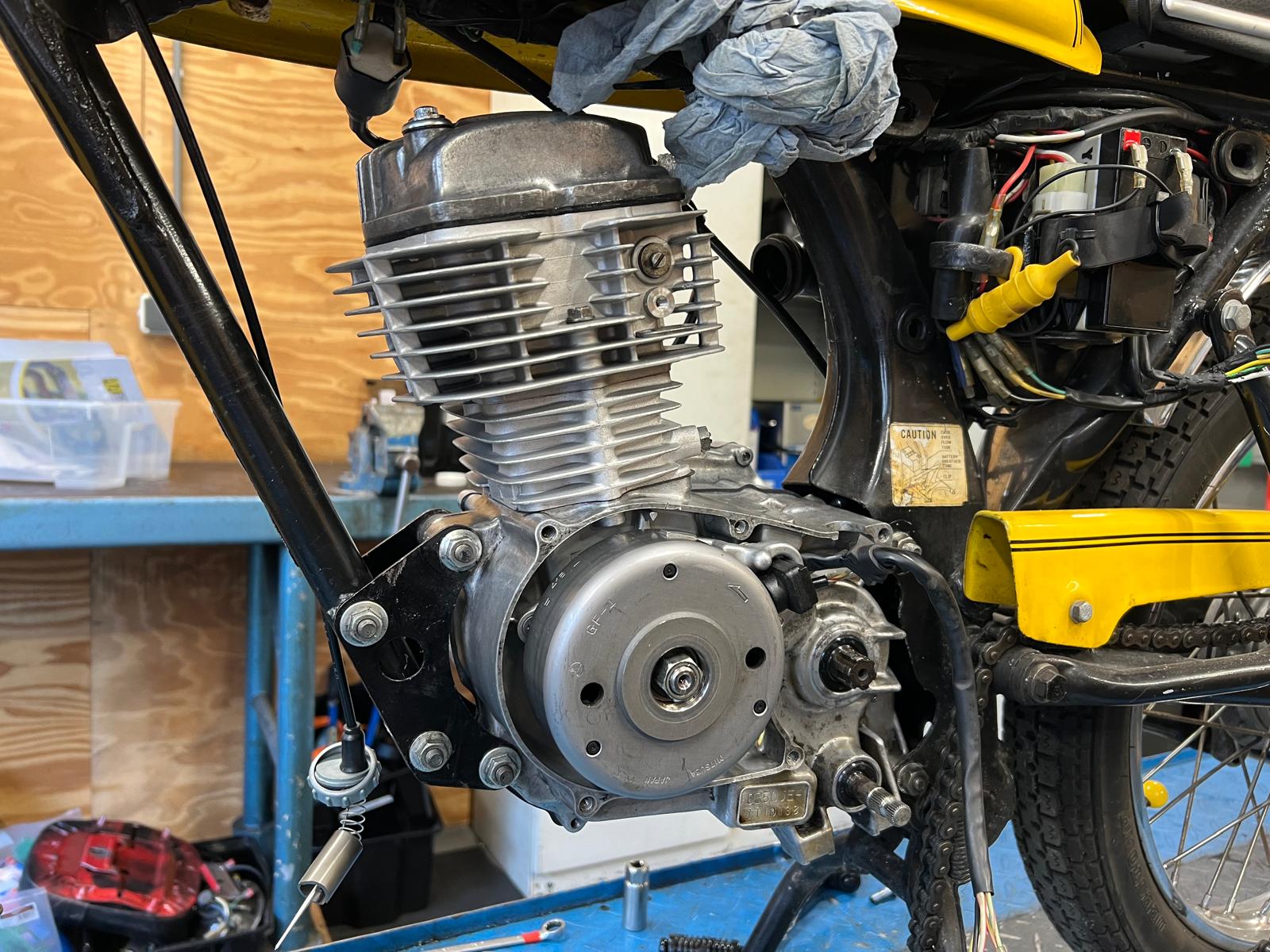
The Mash mopeds are all equipped with virtually the same engine. However, there is a difference between the Euro 3 / 4 and Euro 5 engines. The Euro 5 engines are equipped with an injection system. Compared to the Euro 3 / 4 engine, the Euro 5 version has an extra connection on the cylinder head for the temperature sensor, and the engine is equipped with a different ignition / alternator for more output for the injection system. A replacement engine is available for Mash mopeds in silver or black. These replacement engines are based on the Euro 3 / Euro 4 variant.
These engines can also be used for the Euro 5 mopeds. You will then have to replicate the connection for the temperature sensor in the cylinder head. The entire ignition will also have to be transferred.
Engine for Mash Fifty / Dirt Track / Scrambler / X-Ride:
(Also available in black)
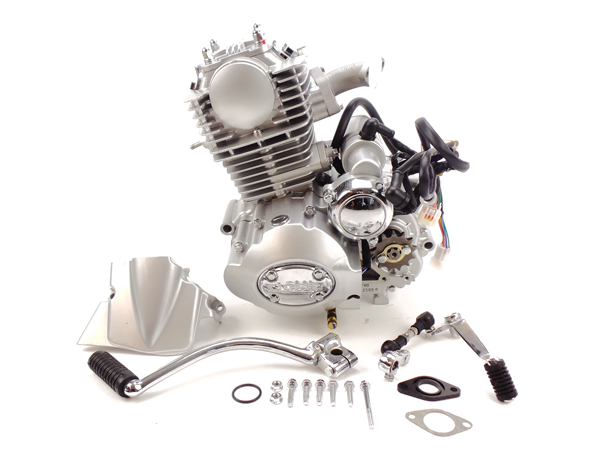
The Hanway Raw 50 is factory-equipped with an engine with an overhead starter motor. This can be replaced by other reproduction engines with an overhead starter motor. However, engines with overhead starter motors are not always readily available. A good alternative can be to mount an engine without a starter motor. Engines with an underslung starter motor are not suitable for the Hanway Raw 50 because they do not fit with the moped's frame.
If you have any questions after reading this blog, feel free to contact us for advice on your specific project.
No comments found.
